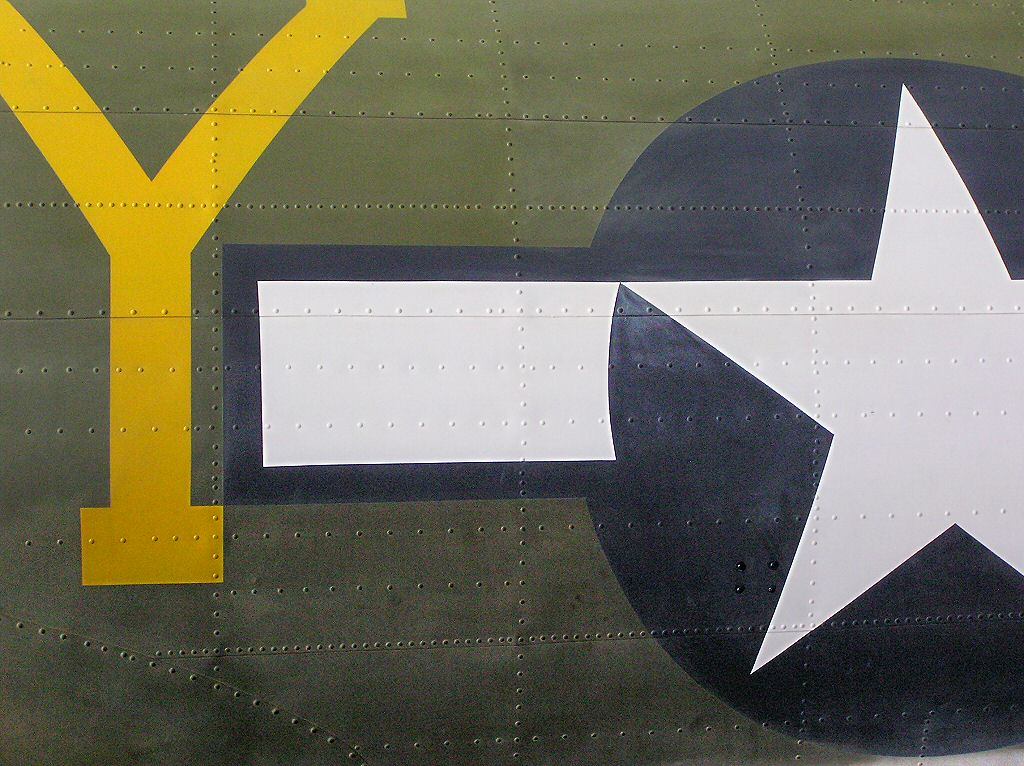|
How to download the photographic
computer wallpaper www.MooreWallpaper.com Tell your friends about us, e-mail them! |
|
WW2 Boeing B17 World War Two Flying Fortress bomber The Boeing B17 World War Two Flying Fortress bomber had a maximum speed of 300 mph with a cruising speed of 170 mph. It’s range depending on model started off at 1, 850 miles and later increased to 3,750 miles. It had a service ceiling of 35,000 feet. For its Armament each Flying Fortress had thirteen .50-cal. machine guns with normal bomb load of 6,000 lbs. New they cost $276,000. The crew comprised of two pilots, a bombardier, a radio-operator and 5 gunners The first prototype flew on 28th July 1935. The Boeing Aircraft Company of Seattle, Washington financed the entire prototype project to meet the Army Airforce need for a multi-engine bomber. It only took 12 months from drawing board to the first test flight. It was a great advance in Boeing design and technology. It was their first military aeroplane that did not have an open cockpit. Mounting five .30-caliber machine guns in clear "blisters" was also a first. A Seattle reporter, who commented on its defensive firepower, was the first to call it a ‘Flying Fortress’. The name stuck. Only a few B-17s were in service in the peace time air force when the USA was attacked by the Japanese on 7th December 1941. The might of the American wartime industrial capacity soon meant that production quickly accelerated. The B17 Flying Fortress served in every combat zone of World War 2, but is best known for daylight strategic bombing of Germany. The last B17 was produced in May 1945. In total 12,726 were produced. The Royal Air Force took delivery of several B-17s in 1941. These were the first planes to see combat. With the first casualties came a review of the B17 and later bombers were given additional armament and armour. The first models of the Flying fortress only had 9 machine guns with a bomb load of only 4000 pounds. Each new version that left the factory was more heavily armed and armoured than the one before. During WWII the US Eighth Air Force participated in missions from various bases in South East England. They often lasted for more than eight hours and hit at Nazi targets deep within enemy territory. To hit their targets they flew during daylight hours whilst most of the British RAF bomber command sorties were flown at night. Until the development of the long range Mustang Fighter escorts squadrons of B-17s often flew over Germany with no fighter escort. They had to rely on their own guns. There were many casualties but American air crews approved of the B-17 design because of its ability to withstand heavy combat damage and still get them home safely. Today less than 15 of Boeing's famous bombers can still fly. Billy Mitchell, championed high-level bombing of enemy ships. During the first year of the Pacific War a B-17 sunk the Japanese battleship Haruna off Luzon during the invasion of the Philippines. Its pilot Colin Kelly was given the American Press work over and became one of the first American popular heroes of World War Two. In reality the Haruna had not even been hit. The story was never fully corrected. Although Flying Fortresses persistently attacked enemy shipping during the battle of Midway official historians take the view that there is no evidence that any Japanese aircraft-carrier was hit by a B-17 bomb. Japanese fighters did not consider it worthwhile attacking B-17s as they caused little damage to the Japanese Navy and the planes defensive firepower made it an unattractive foe. Dive-bombers were much more effective than high level bombers. There is one recorded Navel success. The Japanese Naval ship Mutsuki was hit by a string of bombs. It is believed that this ship was the first to be hit by horizontal bombing during the World War 2.The truth was that during the inter-war period and well into World War Two most of the world's major air forces greatly overestimated the accuracy and lack of effectiveness of high-level bombing, whether against shipping or against land targets. WW2 Aircraft There are many International Air Tattoos and air shows like the one at Fairford Air Base, Duxford, Farnborough, Biggin Hill, Cosford, Eastbourne AirShow, Abingdon UK air show, Boscombe Down UK air shows, Greenham Common, Mildenhall air fete where you can have fun with all the family looking at static aviation displays as well as the acrobatics in the air. You can see many of these planes, Supermarine spitfire, tornado, battle of Britain fighters, warbirds, vulcan,, Lancaster, lightning, mosquito, Eurofighter, VC10, DC10 Shackleton, jaguar, typhoon, sabre, super sabre, delta dart, talon, phantom, falcon, thunderbirds, eagle. Learjet, lockheed, Douglas, McDonnell Douglas F-15A Eagle, McDonnell Douglas AV-8B Harrier II USMC, Vought F4U-5NL Nite-Corsair, McDonnell Douglas A-4F Skyhawk USMC, Lockheed HC-130H Hercules, Lockheed P-38J Lightning, Curtiss P-40E Warhawk. North American P-51D Mustang, Republic P-47B/D Thunderbolt Razorback, Bell P-39D Airacobra , Northrop P-61B Black widow, Martin B-26B/C Marauder, North American B-25B/C Mitchell, B-24J Liberator, Boeing B-17G Flying Fortress, Boeing B-29 Superfortress, Zero, Hawker Hurricane, Junkers Ju 52, Messerschmitt Me 110C, Messerschmitt Bf 109E, Focke Wulf Fw 190A, Panavia Tornado RAF, Grumman A-6A Intruder, Grumman F-14A Tomcat, Douglas F-18A Hornet USN, Lockheed S-3B Viking, Grumman E-2C Hawkeye, Lockheed C-130H Hercules, Lockheed C-5A/B Galaxy to name but a few |
www.MooreWallpaper.com Add our site to your 'Favorites' list now!
![]()
![]() (Website
design by Craig
Moore, London, England)
(Website
design by Craig
Moore, London, England)
